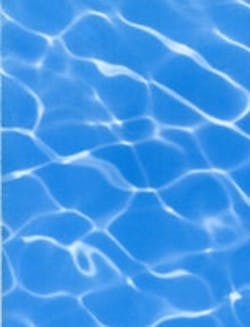Indiana Company Saves Environment From Chemically Contaminated Water
When you think of an environmentally friendly company, a steel processing plant does not typically come to mind. However, Stripco Inc. of Mishawaka, Ind., a manufacturer of production-ready, cold-rolled steel coils, is the exception. Due to their recent investment in a natural gas powered 60 kW microturbine, they are now producing some of their own electricity. The generated heat is then used in their manufacturing process, saving them money and truck loads of coal at the power plant.
This significant amount of savings has led to their selection as one of Indiana's top 25 companies up for the 2005 Governor's Awards for Environmental Excellence. Although the 2005 award winners have yet to be announced, Stripco is already considering applying for a 2006 award - focusing, this time around, on the savings they have received and the pollution they have eliminated with their chemical-free water treatment systems.
In August of 1995, Stripco made another wise decision that also proved to be cost-effective and environmentally-friendly when they installed a magnetic water treatment system in the place of chemicals to control lime/scale and corrosion on one of their cooling towers. A few months later they installed another magnetic system on a second cooling tower.
When calcium, magnesium and other water-borne minerals are exposed to heat, pressure, friction and other physical changes within water-using equipment, they precipitate out of solution and form layers of calcium carbonate (commonly known as lime/scale) on the heat transfer surfaces. According to the United States Bureau of Standards, just 1/2-in. of this mineral scale build-up can increase energy costs by as much as 70%, as it creates a great insulating barrier between the heat transfer surface and the water. Another common concern in water-using equipment is corrosion, especially in situations where the water is aggressive due to low pH and/or excessive free oxygen content.
For years, chemicals have been the traditional and conventional method used to control these problems in heat-transfer equipment. However, magnetic water conditioners employ a physical approach to fight this battle. The particular conditioner Stripco chose is specially designed with alternating, reversing-polarity bar magnets which have multiple poles and fields. As minerals in water are exposed to these uniquely arranged magnetic fields, their molecular structure is re-aligned in such a way that they lose the ability to bond together and form scale when they are exposed to heat transfer. Instead, they enter into a state of suspension and can be easily removed through blow-down or bleed-off. When the magnetic water conditioner is used in conjunction with centrifugal separation and filtration equipment, bleed requirements are totally eliminated.
Prior to Stripco's opening in 1994, Steve Mihojevich, Director of Engineering, recommended that his newly-hired Project Engineer, Richard Smith, check into magnetic water treatment (MWT). Having had prior experience with MWT, Mihojevich felt confident in choosing this physical treatment method over chemical treatment. Smith, on the other hand, had never used anything other than chemicals and was somewhat apprehensive. However, the thought of the ease and savings this process might offer them over traditional water treatment helped him to be more open to trying something new and different.
Smith said his acceptance of MWT was not easily won, taking him about five years to totally believe in the treatment. Smith went on to say "Problems don't usually happen immediately; they show up years down the road. But after five years without any problems, that's when I was convinced it was working." It has now been 10 years since Stripco began using magnetics, and Smith says his favorite part is the low maintenance and the environmental aspect of them.
Over the past decade, by choosing a chemical-free treatment, along with ultraviolet equipment for biological control, Stripco has eliminated hundreds of thousands of gallons of chemically contaminated water from going to waste and into the environment. They have also saved tens of thousands of dollars in the operation and maintenance of their cooling tower systems by reducing expenses associated with chemical treatment.
When asked to compare his water treatment systems to chemical treatment, Smith emphasized the low maintenance and operating cost of the magnetic water conditioners. The only work Stripco performs on their conditioners is monitoring the conductivity of the cooling tower water in order to determine if they need to adjust the bleed rate. The bleed rate is up to 25% less than when treating with chemicals, as the system's unique treatment process effectively controls mineral scale deposition in cooling systems with cycles of concentration as much as 5-10 times greater than what is required for chemically treated systems to effectively do the same job. "It pretty much runs on its own and we do not have to worry about it," Smith said.
Even after hundreds of thousands of successful magnetic water treatment installations worldwide, there is still some controversy about MWT. Smith feels that any skepticism comes from the fact that it's a hard concept to understand. "Chemistry is chemistry, and you can prove how it works. Magnetic water treatment is hard to get a hold of," said Smith. However, MWT was recently tested by a Drexel University professor in a very closely controlled and monitored study sponsored by ASHRAE Research which showed exceptional results for lime scale control. As more and more people become aware of and apply this technology, they will not only save dollars, they but will also help to save the environment.
Source: Magnatech Corp.
